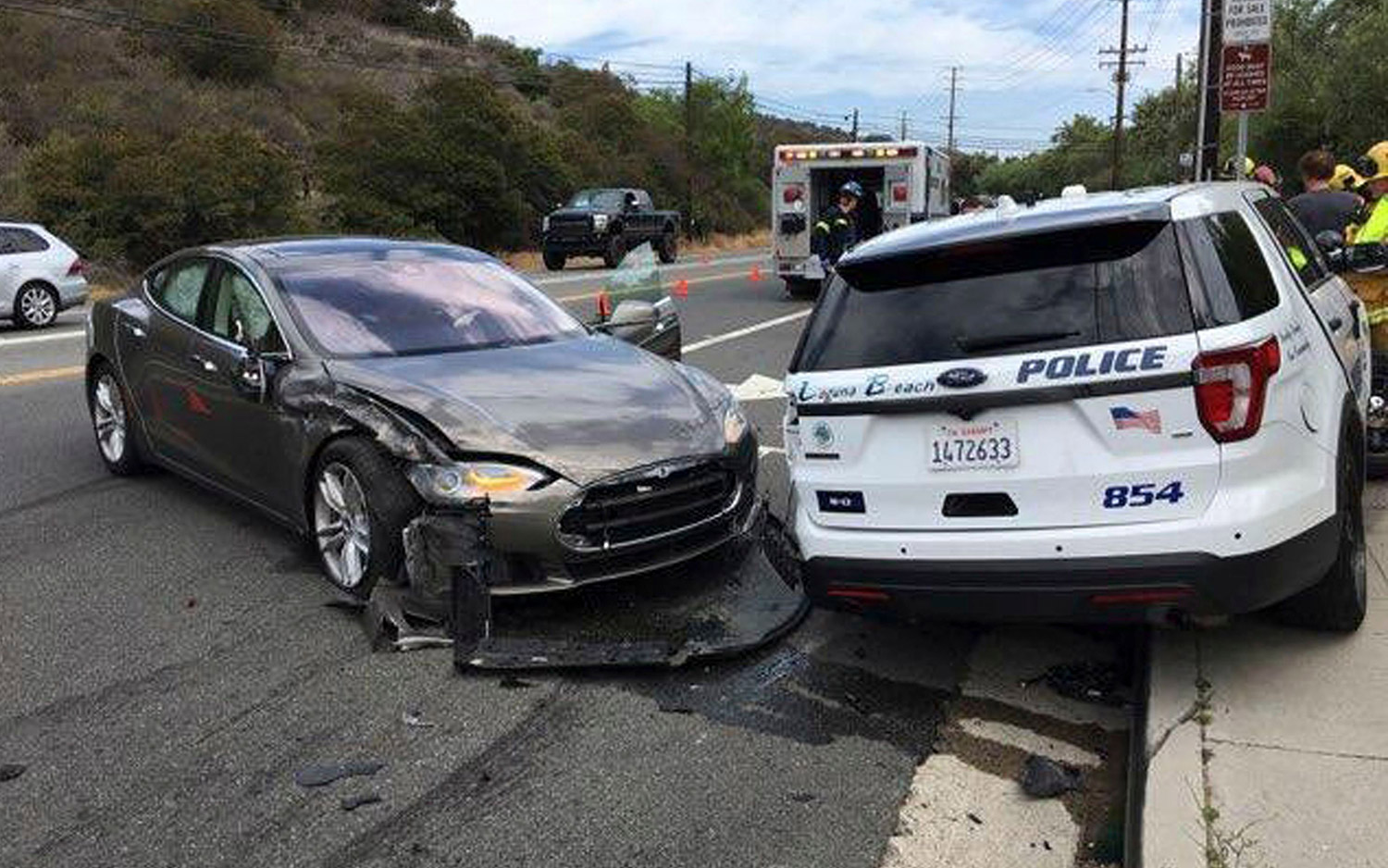
Tesla on Autopilot Crashes into Parked Police Car

The idea that self-driving cars will be much safer than human drivers has been taking a hit lately with a string of autopilot crashes, the latest incident in California this week.
A Tesla Sedan crashed into an empty, parked police car in Laguna Beach on Tuesday (May 29) while running on semi-autonomous autopilot. The driver who was behind the wheel experienced minor injuries, according to the Associated Press.
Sergeant Jim Cota of the Laguna Beach Police Department said the car was totaled, so he was thankful no one was in it, according to the Los Angeles Times. Cota added that a year ago, in the same area, there was a similar instance of a Tesla crashing into a semi-truck. [The World's Fastest Vehicles]
This follows a trail of other autopilot crashes including one in Utah of a driver looking at her phone while riding in a Tesla on autopilot, a fatal accident in California of a Tesla Model X crashing into a barrier in March, and another fatal Tesla crash in Florida in 2016 — the first known Tesla autopilot crash, according to the Los Angeles Times .
According to the Times, Tesla has warned drivers that they need to stay alert and keep their hands on the wheel when on autopilot mode. They also make drivers accept a dialogue box that says this mode is only designed for use on highways with a "center divider and clear lane markings," a Tesla spokesperson told the Times.
But it's not only Tesla's autopilot that has been causing trouble lately. Last March, an Uber self-driving car killed a pedestrian in Arizona as she was crossing the street. According to a preliminary report released by the National Transportation Safety Board last week, the Uber system detected the woman 6 seconds before hitting her, first identifying her as an unknown object, then as a vehicle, and finally as a bicycle (she was walking a bike across the street). Then, 1.3 seconds before the crash, the autopilot system recognized that an emergency brake would be necessary to avoid a crash; the way the autonomous Uber system was set up, it didn't allow for such emergency braking maneuvers and expected the driver to take control, yet didn't issue any warnings.
The seeming spate of accidents may make self-driving cars seem like menaces. Granted, the sample size for autonomous vehicle accidents is much smaller than human-caused vehicles crashes — those are so common that most are not reported in the news. In 2016, 37,461 people died because of traffic-related accidents in the United States, according to the New York Times. Most researchers tend to think self-driving cars will still be safer, but that they are in their experimental stages, according to the NY Times.
Sign up for the Live Science daily newsletter now
Get the world’s most fascinating discoveries delivered straight to your inbox.
Originally published on Live Science.

Yasemin is a staff writer at Live Science, covering health, neuroscience and biology. Her work has appeared in Scientific American, Science and the San Jose Mercury News. She has a bachelor's degree in biomedical engineering from the University of Connecticut and a graduate certificate in science communication from the University of California, Santa Cruz.









